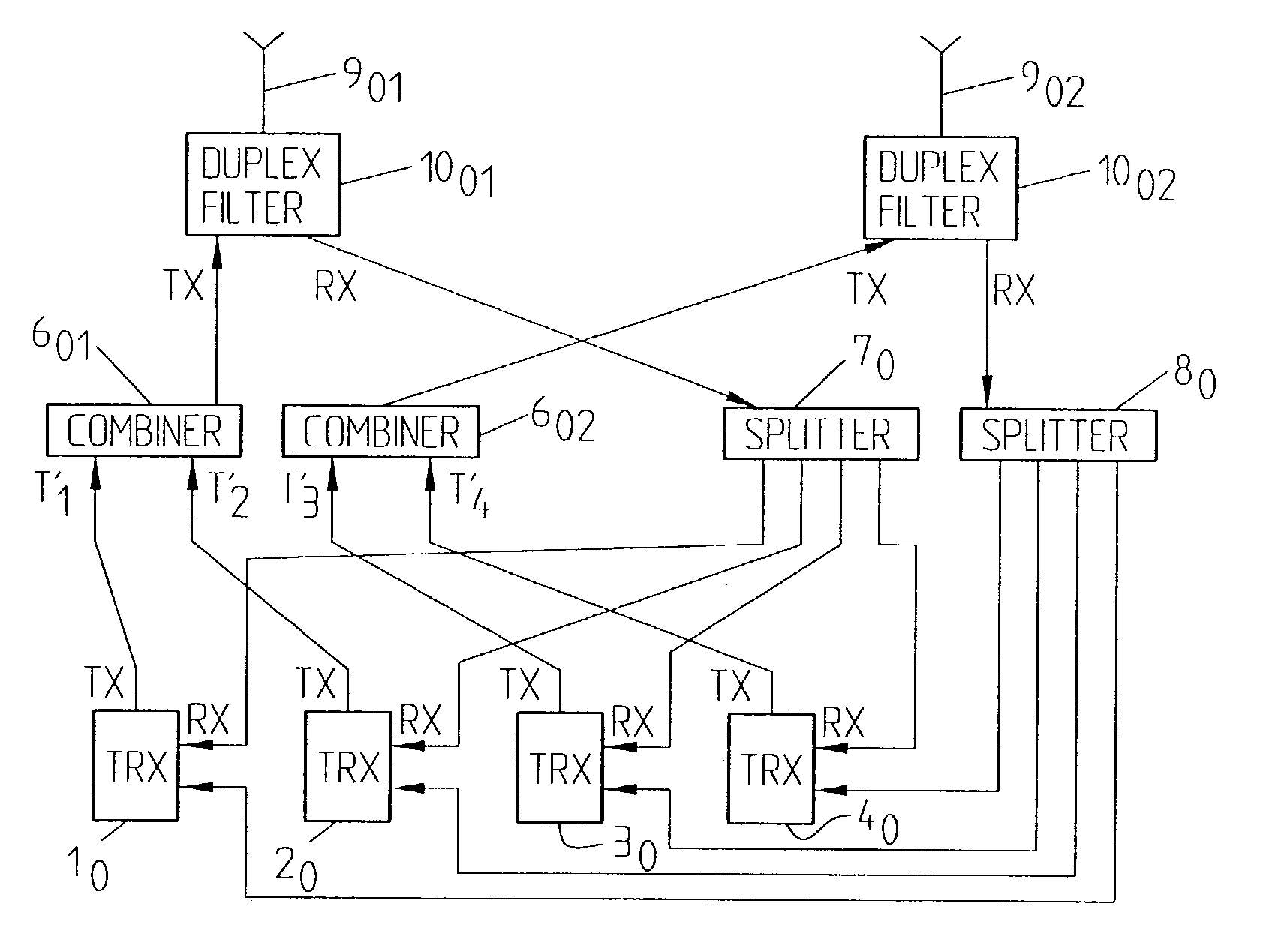Antenna arrangement and method relating thereto
a technology of antenna arrangement and antenna arrangement, applied in diversity/multi-antenna system, beacon system using radio waves, instruments, etc., can solve the problems of excessive losses of transmitted and received signals in the system, complicated situation, and duplex filtering, so as to reduce the loss of transmitted and/or received signals and reduce the loss of downlink combiners
- Summary
- Abstract
- Description
- Claims
- Application Information
AI Technical Summary
Benefits of technology
Problems solved by technology
Method used
Image
Examples
Embodiment Construction
[0046]In the block diagram of FIG. 1 a conventional, omni-directional base station antenna arrangement with four transceivers TRX 10, 20, 30, 40 is disclosed. The illustrated device employs space diversity. A duplex filter 1001, 1002 is connected to each antenna 901, 902. For downlink communication, the signals from TRX 10, 20 are combined in combining means 601 whereas the signals T3′, T4′ from TRXs 30, 40 are combined in combining means 602. The combined signals T1′, T2′ are provided to duplex filter 1001 and then output to antenna means 901. In a similar manner signals T3′, T4′ are combined in combining means 602, output to duplex filter 1002 and provided to antenna means 902. As referred to earlier in the application, the downlink combining means 601, 602 introduce very high losses and for an arrangement containing more transceivers, the losses on the downlink will indeed be severe.
[0047]For uplink communication, signals received in the antenna means 901, 902 are input to the re...
PUM
 Login to View More
Login to View More Abstract
Description
Claims
Application Information
 Login to View More
Login to View More - R&D
- Intellectual Property
- Life Sciences
- Materials
- Tech Scout
- Unparalleled Data Quality
- Higher Quality Content
- 60% Fewer Hallucinations
Browse by: Latest US Patents, China's latest patents, Technical Efficacy Thesaurus, Application Domain, Technology Topic, Popular Technical Reports.
© 2025 PatSnap. All rights reserved.Legal|Privacy policy|Modern Slavery Act Transparency Statement|Sitemap|About US| Contact US: help@patsnap.com



